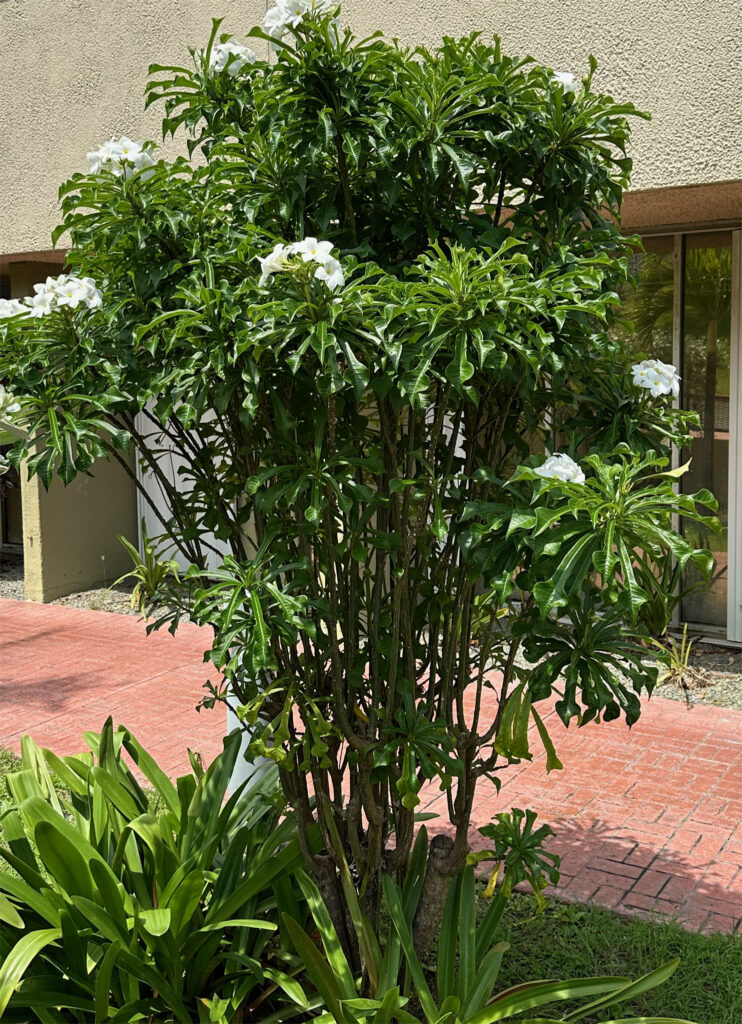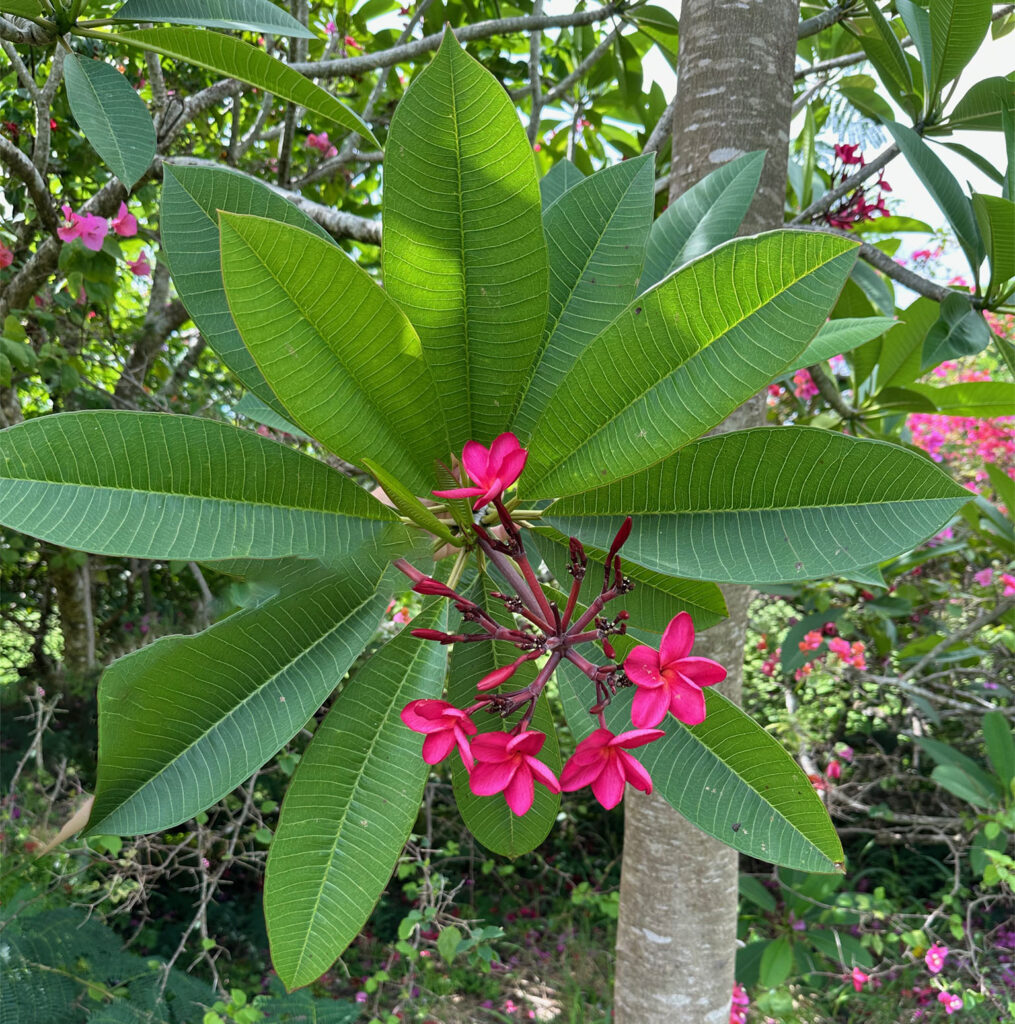Scientific name: Plumeria alba (white); Plumeria rubra (red)
Common names: Frangipani, Temple tree, Graveyard tree
Frangipani, in its several varieties, with beautiful and fragrant flowers, is a beloved plant in many parts of the world. Whether you prefer the vibrant colors of Plumeria rubra or the classic elegance of Plumeria alba, these plants can add a touch of tropical beauty to any garden. Their ease of cultivation and cultural significance make them a popular choice for both ornamental and traditional uses.
White plumeria is native to Central America, Mexico, the Caribbean, and South America. It’s widely cultivated in tropical and subtropical regions around the world for its fragrant and colorful flowers.
The white plumeria variety is particularly prized for its pure white blossoms, which often have a yellow center. These flowers are known for their sweet, intoxicating fragrance and are often used in leis, floral arrangements, and as decorations in tropical gardens.
Plumeria plants are relatively easy to grow, requiring full sun and well-drained soil. They are drought-tolerant once established but appreciate regular watering during the growing season. With their stunning flowers and ease of cultivation, white plumeria adds a touch of tropical beauty to any garden or landscape.
Red frangipani (Plumeria rubra) is native to Central America, Mexico, and Venezuela,. This tree adds a touch of tropical elegance to any landscape, and is known for its rich red, pink, yellow, and white blossoms, thrives in warm and sunny climates. The flowers, with their sweet, intoxicating fragrance, are a common sight in gardens, along roadsides, and near historical sites, contributing to the area’s natural beauty. Plumeria rubra’s ability to flourish in well-drained soils and its drought-resistant nature make it an ideal choice for various environments. The tree’s broad, spreading canopy provides welcome shade, while its flowers are often used in traditional lei-making and local celebrations. The red frangipani not only enhances the aesthetic appeal of its surroundings but also serves as a symbol of rich botanical diversity and vibrant cultural traditions.

